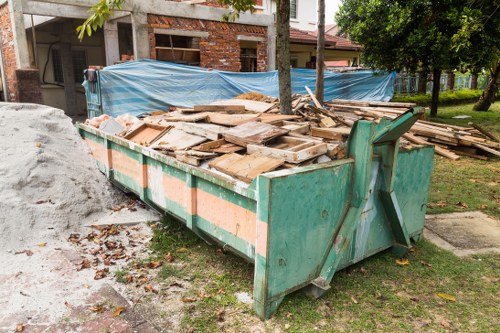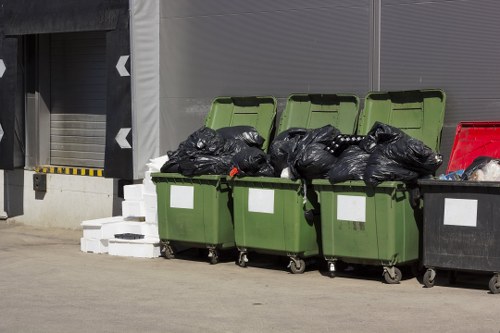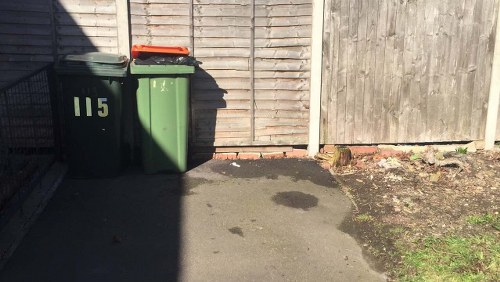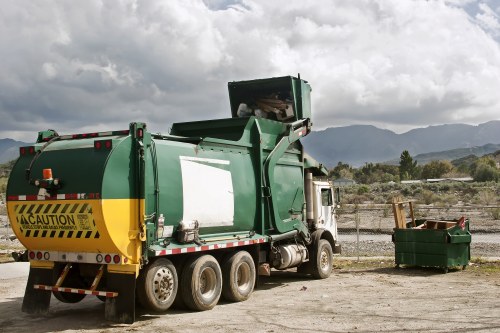Understanding Probate Clearance in Clearance Sucks
The Basics of Probate Clearance

Probate clearance is a critical step in the legal process that ensures the rightful transfer of a deceased person's assets to their heirs or beneficiaries. It involves validating wills, identifying assets, paying debts, and distributing the remaining estate as per the decedent's wishes or state laws.
In the context of Clearance Sucks, navigating probate clearance can be particularly challenging. The platform often discusses the frustrations individuals face when dealing with complex clearance processes, and probate clearance is no exception. Understanding the intricacies of probate clearance can alleviate some of these challenges.
One of the primary objectives of probate clearance is to provide a transparent and orderly process for settling an estate. This ensures that all legal obligations are met and that beneficiaries receive their due inheritance without unnecessary delays or complications.
The Importance of Probate Clearance

Probate clearance plays a vital role in maintaining the integrity of the legal system. It ensures that the deceased's wishes are respected and that assets are distributed fairly among heirs. Without probate clearance, disputes over asset distribution could lead to prolonged legal battles, causing emotional and financial strain on the family members involved.
Moreover, probate clearance helps in identifying and addressing any outstanding debts or obligations of the deceased. This prevents survivors from being held personally liable for unpaid debts and ensures that creditors are paid appropriately from the estate.
In the realm of Clearance Sucks, understanding the significance of probate clearance can empower individuals to navigate the clearance process more effectively. It emphasizes the need for proper documentation and adherence to legal protocols to facilitate a smooth clearance experience.
Steps Involved in Probate Clearance

The probate clearance process typically involves several key steps:
- Filing the Will: The first step is to file the deceased's will with the probate court. If there is no will, the estate is considered intestate, and state laws determine asset distribution.
- Appointing an Executor: The court appoints an executor or personal representative to oversee the probate process. This individual is responsible for managing the estate's affairs.
- Inventory and Appraisal: The executor compiles a detailed inventory of the deceased's assets and has them appraised to determine their value.
- Paying Debts and Taxes: Outstanding debts and taxes are identified and paid from the estate's assets.
- Distributing Assets: After debts and taxes are settled, the remaining assets are distributed to the beneficiaries as outlined in the will or by state law.
Common Challenges in Probate Clearance

Probate clearance is not without its challenges. Common issues include:
- Disputes Among Heirs: Conflicts can arise if beneficiaries disagree on the distribution of assets or the validity of the will.
- Complex Assets: Managing and appraising complex assets like businesses, real estate, or valuable collections can be difficult.
- Legal Complications: Navigating the legal requirements of probate can be overwhelming, especially without professional assistance.
- Delays in the Process: Probate clearance can be time-consuming, sometimes taking months or even years to complete.
- Cost of Probate: Legal fees, court costs, and other expenses can reduce the overall value of the estate available to beneficiaries.
Strategies to Simplify Probate Clearance

Despite the challenges, there are strategies to streamline the probate clearance process:
- Proper Estate Planning: Creating a comprehensive estate plan with clear directives can minimize ambiguities during probate.
- Maintaining Accurate Records: Keeping detailed records of assets, debts, and financial transactions facilitates smoother probate proceedings.
- Seeking Professional Help: Engaging with probate attorneys or financial advisors can provide expert guidance and reduce the burden on executors.
- Avoiding Common Pitfalls: Being aware of common probate issues allows individuals to proactively address potential problems.
- Communicating with Beneficiaries: Open and transparent communication can prevent misunderstandings and conflicts among heirs.
The Role of Technology in Probate Clearance
Digital Tools for Managing Estates
Advancements in technology have introduced digital tools that can aid in managing the probate clearance process. Software solutions can help executors organize documents, track expenses, and maintain communication with beneficiaries, making the process more efficient and less error-prone.
Online legal services also offer resources and guidance for individuals navigating probate clearance. These platforms can provide templates for legal documents, access to legal professionals, and educational materials to better understand the probate process.
Embracing technology in probate clearance aligns with the ethos of platforms like Clearance Sucks, which advocate for streamlined and user-friendly clearance processes.
Legal Considerations in Probate Clearance
Understanding State Laws
Probate clearance is governed by state laws, which can vary significantly from one jurisdiction to another. It's essential to understand the specific requirements and procedures applicable in the state where the probate is being handled.
Legal considerations also include the validity of the will, the rights of creditors, and the protection of beneficiaries. Executors must ensure compliance with all legal obligations to avoid potential legal disputes or challenges to the probate process.
Consulting with a probate attorney who is knowledgeable about local laws can provide invaluable assistance in navigating these legal complexities.
Emotional Aspects of Probate Clearance
Dealing with Grief and Stress
Probate clearance often occurs during a time of emotional turmoil for the bereaved. Managing the emotional aspects alongside the legal responsibilities can be overwhelming. It's important for individuals to seek support from family, friends, or professional counselors to cope with the stress and grief.
Maintaining clear communication and setting realistic expectations can help mitigate some of the emotional strain associated with the probate process.
Recognizing and addressing these emotional challenges is crucial for a smoother probate clearance experience.
Future Trends in Probate Clearance
Potential Reforms and Innovations
The probate clearance process is continually evolving, with potential reforms aimed at making it more efficient and less burdensome. Innovations such as simplified probate procedures for smaller estates, increased use of digital documentation, and enhanced access to legal resources are on the horizon.
These trends align with the mission of platforms like Clearance Sucks, which advocate for improvements in clearance processes to better serve individuals and families during challenging times.
Staying informed about these developments can help individuals prepare for and adapt to changes in the probate clearance landscape.
Conclusion
Achieving Successful Probate Clearance
Probate clearance, while complex, is an essential process for ensuring the orderly transfer of assets and the fulfillment of a deceased person's wishes. By understanding the steps involved, recognizing common challenges, and implementing effective strategies, individuals can navigate probate clearance more efficiently.
Platforms like Clearance Sucks highlight the frustrations associated with clearance processes, including probate clearance. However, with proper planning, professional assistance, and the use of technology, the probate process can be managed in a way that minimizes stress and ensures a fair distribution of the estate.
For those embarking on the probate clearance journey, taking proactive steps and seeking the right support can make all the difference in achieving a successful and timely resolution.
Contact us today to learn more about how we can assist you in navigating the complexities of probate clearance.